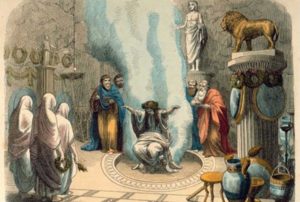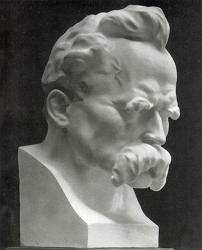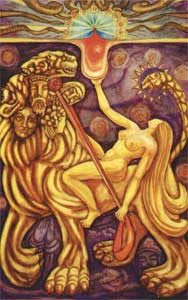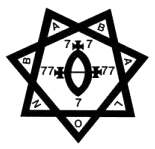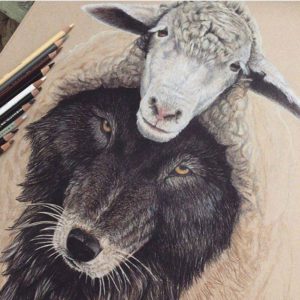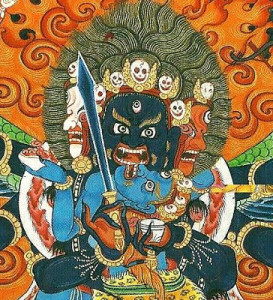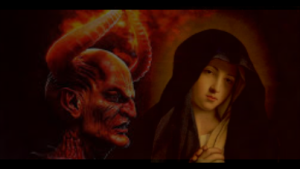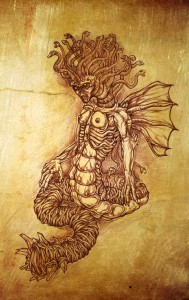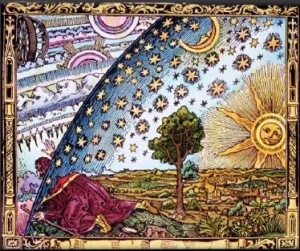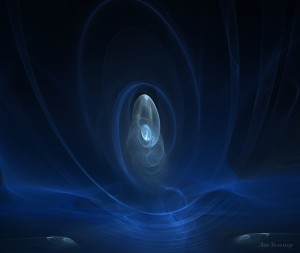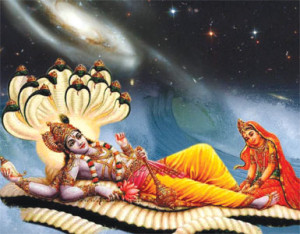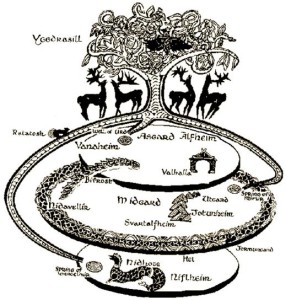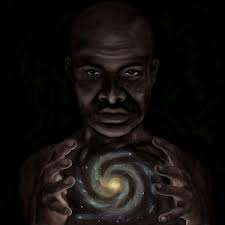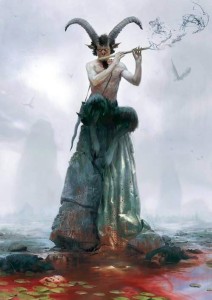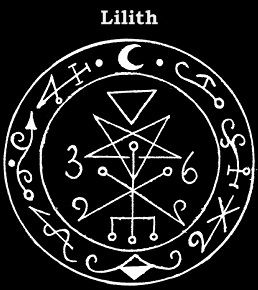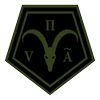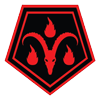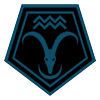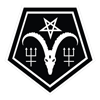Necromancers of the Gods
By Thomas LeRoy ~ Founder of The Sect of the Horned God
We have no symbolic life, and we are all badly in need of the symbolic life. Only the symbolic life can express the need of the soul – the daily need of the soul, mind you! And because people have no such thing, they can never step out of this mill – this awful, banal, grinding life in which they are “nothing but.”…Everything is banal; everything is “nothing but,” and that is the reason why people are neurotic. They are simply sick of the whole thing, sick of that banal life, and therefore they want sensation. They even want a war, they all want a war, they are all glad when there is a war, they say, “Thank heaven, now something is going to happen – something bigger than ourselves!” These things go pretty deep, and no wonder people get neurotic. Life is too rational; there is no symbolic existence in which I am something else, in which I am fulfilling my role, my role as one of the actors in the divine drama of life. — C.G. Jung
Why is there a suicide epidemic? Mass shootings? A a deep cultural malaise? Carl Gustav Jung would say it is because the citizens of the modern Western World have lost contact with symbols, such as the metaphors we know as “God” or “The Gods”. The gods are primordial aspects of our being, psychic images connected to the collective unconscious that cannot be fully rationalized. Jung theorized we needed these symbols to express that which could not be wholly known.
Though the gods are buried deeply within the human subconscious, most existed long before us. They were an inherent part of the minds of our primordial ancestors, beings now long extinct: Aphrodite was born to that first creature to display lust; Aries came into existence with the first being to kill another of its kind out of anger; Pan, with that first early, early being to experience irrational fear, etc.
For many thousands of years humankind led lives deep with symbolic meaning. The gods were everywhere and in everything. From the time of the ancient communal fires to the god of Abraham, the gods fed the psyche, bringing about a life-enhancing effect. Even though it’s believed (more often than not) by people without an understanding of metaphorical symbolism, Abrahamism, the preeminent religious philosophy in the West, with all its misuses and abuses, brought nourishment to those overwhelmed with the psychic chaos of being.
But with the Age of Enlightenment, and the escalation of scientific thought, the gods began to die. This deicidal slaughter became so great it caused the 19th century, atheistic German philosopher Friedrich Nietzsche to declare, “God is dead!” But even though he, personally, had no use for the Abrahamic god, Nietzsche saw God’s death as deleterious to the basic belief system of the West. Just as you may not need antidepressants to get through the day, there are many who do, and the removal of such could wreak havoc. Thus, the demise of the Abrahamic system put many people at risk of despair, or meaninglessness. This new atheistic understanding of the world could, or would, lead to pessimism, “a will to nothingness” that was antithetical to a life-affirming philosophy. A nihilistic world was what Nietzsche feared and he stated as such when he wrote:
“What I relate is the history of the next two centuries. I describe what is coming, what can no longer come differently: the advent of nihilism...”
And the events of the 20th century would prove him right.
What is the answer then? Where can one find meaning in a world that has murdered the gods? Many have turned to politics. This form of vehement religiosity is evident in the political tribalism so prevalent in the world today. Others have found the gods in technology, entertainment, and even the sciences. But these solutions are the equivalent to nourishing the body with junk-food — temporarily fulfilling, but detrimental in the long run.
For those on the left-hand path resurrecting the gods is the answer, but one must be wary when performing this act of necromancy. Those longing for a shepherd, fearful to venture forth, would rather follow the herd then carve out their own personal path, will not find solace on the left-hand path. The left-hand path is a dangerous road where the gods are not there to coddle you, but to shake you violently until you awaken to a reality most would rather ignore. They are gods, not of forgiveness and mercy, but dark entities longing to devour you. They are a reminder that the strength to suffer the tribulations of existence should come, not from the whims of the collective, but from your own personal will.
We, The Sect of the Horned God, are the necromancers of the gods. Reanimation of those ancient archetypes is what we have to offer. But the act of invoking is up to you.
The Whore of Babylon
“And there came one of the seven angels which had the seven vials, and talked with me, saying unto me, Come hither; I will shew unto thee the judgment of the great whore that sitteth upon many waters: With whom the kings of the earth have committed fornication, and the inhabitants of the earth have been made drunk with the wine of her fornication.” –Revelation 17
The Whore of Babylon is a figure of abomination originally mentioned in the Book of Revelation. The writer of Revelation, John of Patmos, used Babylon as a symbol of the enemies of God and His people. When he wrote it around 100 AD, John meant Babylon to represent the great power of the day, the Roman Empire, which was persecuting Christians. The people of that period understood metaphor and would have got the meaning of his message. But, of course, modern Christians interrupt it differently. They see either the Roman Catholic Church, or any other “false church”, (or even the city of Jerusalem) as being the “Whore”. Thus, they are breathing life into the Book of Revelation, making it pertinent to today’s world and their apocalyptic vision.
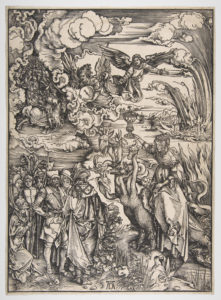
In Thelema, Aleister Crowley saw “Babalon” (as he spelled it) in the goddess form. As Crowley wrote in his Book of Thoth, “she rides astride the Beast; in her left hand she holds the reins, representing the passion which unites them. In her right she holds aloft the cup, the Holy Grail aflame with love and death. In this cup are mingled the elements of the sacrament of the Aeon”. In this abstract interpretation she represents the female sexual impulse and the liberated woman. She is also the consort of Chaos, the “Father of Life” and the male form of the Creative Principle. This brings in the male/female dynamic found in the world’s great mythologies, such as the Horned God and the Goddess, Shiva and Shakti, and, as been postulated here in The Sect, Satan and the Virgin Mary.
In the Gnostic Creed, the Whore is mentioned as follows:
I believe in one secret and ineffable LORD; and in one Star in the Company of Stars of whose fire we are created, and to which we shall return; and in one Father of Life, Mystery of Mystery, in His name CHAOS, the sole viceregent of the Sun upon the Earth; and in one Air the nourisher of all that breathes.
And I believe in one Earth, the Mother of us all, and in one Womb wherein all men are begotten,and wherein they shall rest, Mystery of Mystery, in Her name BABALON.
And I believe in the Serpent and the Lion, Mystery of Mystery, in His name BAPHOMET.
And I believe in one Gnostic and Catholic Church of Light, Life, Love and Liberty, the Word of whose Law is THELEMA.
And I believe in the communion of Saints.
And, forasmuch as meat and drink are transmuted in us daily into spiritual substance, I believe in the Miracle of the Mass.
And I confess one Baptism of Wisdom, whereby we accomplish the Miracle of Incarnation.
And I confess my life one, individual and eternal that was, and is, and is to come.
AUMN. AUMN. AUMN.
In the creed she is also identified with Mother Earth, in her most fertile sense. At the same time, Crowley believed that Babalon had an earthly aspect in the form of a spiritual office, which could be filled by actual women—usually as a counterpart to himself, “Mega Therion” (The Great Beast)—whose duty was then to help manifest the energies of the current Aeon of Horus.
Babalon is identified with Binah on the Tree of Life, the sphere that represents the Great Sea and the mother-goddesses Isis, Bhavani, and Muat. Moreover, she represents all physical mothers. As Thelemic authors Sabazius and Helena wrote:
BABALON, as the Great Mother, represents MATTER, a word which is derived from the Latin word for Mother. She is the physical mother of each of us, the one who provided us with material flesh to clothe our naked spirits; She is the Archetypal Mother, the Great Yoni, the Womb of all that lives through the flowing of Blood; She is the Great Sea, the Divine Blood itself which cloaks the World and which courses through our veins; and She is Mother Earth, the Womb of All Life that we know.
Lesser is More in Magic
By Rasha, Member of The Sect of the Horned God
Never let them see you coming.
The wolf eats the sheep and shaves its hide with his rigged teeth, carved only by feeding throughout the years, and then he waits for the flock to return so he may join them, covered with the familiar cloth they know to be their own. And the wolf walks with them for a time. He licks them, shows them affection, for a time. Becomes one of them. Until the hunger returns. Following instinct and will, upon the Shepard’s folly, the beast makes them all his prey with gratitude in nature. Upon a hill, overlooking the slaughter, the goat watches with delight, as he has more grass for himself to eat now that the flock has fallen to the wolf’s ruthless attrition.
Most people can only see skin deep, and much like the flock, the skin which best resembles their own puts them more at ease. The word “skin” here is not necessarily a metaphor for race, but for behaviors, style of dress, social norms, and generally anything “herdish.” Robert Greene’s The 48 Laws of Power references using something called the mirror effect:
Law 44: Disarm and Infuriate with the Mirror Effect
The mirror reflects reality, but it is also the perfect tool for deception: When you mirror your enemies, doing exactly as they do, they cannot figure out your strategy. The Mirror Effect mocks and humiliates them, making them overreact. By holding up a mirror to their psyches, you seduce them with the illusion that you share their values; by holding up a mirror to their actions, you teach them a lesson. Few can resist the power of the Mirror Effect.
Most people have weak egos. Accordingly, compliments can be used not only to disarm them, but act as the hypodermic needle to open their minds in ways which allow you to disseminate thoughts and ideas, which you will later allow them to claim as their own. For if your ego is healthy and strong, you need not take the credit, nor do you need the outer recognition from a sheepish herd, for having your will implemented is satisfying enough. As much as I’d love to use vinegar, the honey stick works best in most cases. Sometimes I’ll give someone a great idea and let them take credit for it. In the end, I don’t get the credit, but I get my way. And they take the fall if something goes wrong. Depending on your objective, this can also be used to “lend them enough rope to hang themselves.”
In my observances over the years, I’ve met too many so-called Satanists who describe themselves as the “lions of the jungle,” attempting to display their dominance in the most pathetic ways, while in reality, like most of us, they find themselves closer to the bottom of the North American socio-economic structure.
One of these people I will call Ginger. I met Ginger when part of a left-hand-path group around a decade ago. I argued that it’s best to act as the “wolf in sheep’s clothing” in society, as it is more of a Machiavellian approach—despite Machiavellian philosophy repeatedly being taken out of context—while he argued that he was the “lion of the jungle,” conquering all. In reality, he was a high school dropout in his 30s living in his mother’s basement and working a dead end job for minimum wage with no benefits. Hardly king of the jungle. Maybe, having little power in reality served as the vehicle to his delusion.
Speaking from my own experiences, being the “wolf in sheep’s clothing” makes practicing lesser magic much more effective. Although I’d prefer to dress in a manner which resembles the grotesque, I know that to accomplish certain things, it’s more important for me to “blend in.” This is especially true working in my profession. I often look like any other business man or church-goer, something the so-called “lions of the jungle” cannot begin to fathom, for they must wear their black, demonic attire at all times and without compromise.
It may be a hard pill for some folks to swallow, being on the path toward self-deification, that powers greater than themselves do in fact exist. What I also find problematic in CoS literature is when representatives credit the real socio-economic elite powers as “de facto Satanists,” which, I’d argue, is the same kind of circular logic used by Christians when describing “God’s Will.”
A true understanding of how power structures work in the world may open the doors to the practice of a lesser magic that works. Satanists aren’t normally accustomed to exhibiting humility. However, if one is dedicated to the pursuit of knowledge and facts, one must position their ego accordingly. Nevertheless, these Satanists will often argue a point, even if they know they are wrong, because either they are too insecure to admit they were incorrect, or somehow think they need to be the “adversary,” which often ends up being played out in the most counter-productive ways. I think one of the LaVeyan “Satanic Sins” deserves revisiting in this case:
Pretentiousness
Empty posturing can be most irritating and isn’t applying the cardinal rules of Lesser Magic. On equal footing with stupidity for what keeps the money in circulation these days. Everyone’s made to feel like a big shot, whether they can come up with the goods or not.
Humbling oneself to knowledge and evidence is something the right-hand-path religions are either unable to do, will not do, or can not do. Conformity to one or more popular ideologies can also stand as a barrier to critical thinking, serving as the underlying bias which shows not only a lack of intellectual perseverance, but also interferes with personal growth. LaVey writes:
Herd Conformity
That’s obvious from a Satanic stance. It’s all right to conform to a person’s wishes, if it ultimately benefits you. But only fools follow along with the herd, letting an impersonal entity dictate to you. The key is to choose a master wisely instead of being enslaved by the whims of the many.
If one’s comfort zone is not challenged, and those we surround ourselveswith resemble no more than a superfluous echo chamber, the ability to think independently is squandered. I’d argue, many who subscribe to the “Satanic credo” are just as hypnotized by the dominant ideologies permeating throughout Western culture as those who call themselves Christians, all the while remaining one with the sleeping masses, and failing to observe how the concept of “individualism” is in fact highly manipulative, fostering a sense of entitlement in some, and collective blindness in many. Most people among the mass think they are individuals.
Never let them see you coming.
The Tibetan Book of the Dead and the Left-Hand Path
by Thomas LeRoy
“The Bardo Thodol is in the highest degree psychological in its outlook”. — Carl Jung
Recited at the bedside of the dearly departed, the Tibetan Book of the Dead is an ancient guide for the soul as it transcends distinct phases (or bardos) between death and rebirth. Though composed for the dead, the Bardo Thodol, as it was originally called, also has lessons for the living. Tibetans believe that it can potentially offer enlightenment to anyone who hears its words, which is why many use it as a tool to come into contact with one’s own essential nature.
The Bardo Thodol, which means “liberation through understanding”, was composed in the 8th century by Buddhist prophet Padmasambhava, and was eventually published as The Tibetan Book of the Dead in 1927 by Oxford University Press. The American anthropologist and writer Walter Evans-Wentz coined the title because of the parallels he found with the writings in The Egyptian Book of the Dead. With the multiple instructions derived from the book, we can see how it has had a direct influence on the minds of the living. Its ultimate goal is to provide a means by which the practitioner can cultivate an unwavering recognition of the nature of wrathful deities, or demons, within his or her own mind, bringing about a liberating transformation of character and a “rebirth” of personality. These after-death states of consciousness are said to consist of various Tibetan gods and demons. The deities appear to be “real” within the after-death experience, but the text instructs the disembodied consciousness to regard them as merely dream-like visions, reflections of its own inner-self. The gods and demons are therefore viewed as metaphors, expressive of the disembodied consciousness of basic psychic tendencies. Thus, The Tibetan Book of the Dead is a psychological document that characterizes basic personality traits and presents the principles of those traits in a symbolic, yet realistic, manner.
On the left-hand path, that personal path of self-overcoming, one must face one’s own demons while delving into the depths of the subconscious. The individual must realize, though, as in the case of the disembodied consciousness of the Tibetan dead, that the demons are phantoms, metaphorical manifestations created in the personal unconscious. Though personal, these demons may share attributes with archetypes in the collective unconscious, thus seeming familiar to all.
Even when the initiate upon the Path misconstrues the meaning of the word “adversary”, thinking it gives them the right to be a contemptible prick, what one should truly be adversarial to are those “demons” that block your path, that bar you from reaching that stage of spiritual/psychological “rebirth”. But not all demons are deleterious. This is what separates the right-hand path from the left. On the LHP we utilize the demonic when it leads to personal exaltation, while on the RHP all that is deemed “dark” is shunned.
The Tibetan Book for the Dead is a psychological document that characterizes basic personality styles and presents the principles of those personalities in a symbolic and condensed manner. Like the demons and dark deities in the Book, those encountered on the left-hand path are also statements of the psyche, and are therefore psychological. A mind that fails to overcome these weaknesses (demons), however, will be destroyed by them. Liberation is still possible, though, simply by recognizing these beings for what they are. Yet the act is also more difficult now because terror forces the mind to flee rather than to examine its experiences, thus not allowing one to progress, or transcend. And transcending your personal “bardos” should be the objective of all upon the Path.
Satan and the Virgin Mary: Long Lost Lovers
by Thomas LeRoy
From the first glimmers of the primordial dawn, the Mother Goddess has had numerous interpretations and faces. Many early societies had a “mother-like godform” that honored the sacred feminine. A mother goddess is a personification of the Earth, the mother of all living things, of fertility and the birth of humanity as a whole. Besides the natural representations, Jungian interpretation equates the archetypal Mother Goddess with the feminine aspect within us all, and also with the greater unconscious, that “deepest ground of the psyche”.
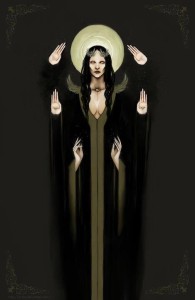
The list of names of the Goddess are endless, and the Virgin Mary, the mother of Jesus, is but one of them. Now, it goes without saying that the Christian mind may find this truth difficult to grasp, but the evidence for this is indisputable. For example, an obscure Early Christian heretical movement, Collyridianism, worshipped the Virgin Mary as a goddess. She was looked upon and worshipped as the supreme being, the Great Mother Goddess. And, as it turns out, “The Virgin” is a mythical character based on older goddesses who were themselves astrotheological personifications of celestial and earthly bodies and principles, the “Queen of Heaven”, prevalent in the ancient world. The old Teutonic goddess Hertha (the Earth) was a Virgin, but was impregnated by the heavenly Spirit (the Sky); and her image with a child in her arms was to be seen in the sacred groves of Germany. The Scandinavian Frigga, in much the same way, being caught in the embraces of Odin, the All-father, conceived and bore a son, the blessed Balder, healer and savior of mankind. Quetzalcoatl, the (crucified) savior of the Aztecs, was the son of Chimalman, the Virgin Queen of Heaven. Even the Chinese had a mother-goddess and virgin with child in her arms; and the ancient Etruscans also. There is the image of Isis nursing her Divine Son, Horus. And like the Christian Mary and Egyptian Isis, the Canaanite goddess Astarte was the “Virgin”. Thus this symbolism of the Goddess and her child has done a good job of expressing the relationship between consciousness and its divine matrix (the collective unconscious) as one of organic unity.
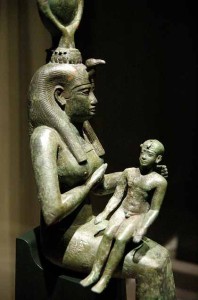
As most might be aware, it was common from the beginnings of Christiandom to adopt older heathen gods and turn them into saints . . . or devils. Castor and Pollux became St. Cosmo and St. Damien; Dionysus still holds his place as St. Denis of Paris. And the Horned God? It’s no stretch to guess who he became. But the relationship between the Neo-Pagan Horned God and the Christian Devil, or Satan, is a bit more complex than one might think. The modern Horned God is a composite of many pre-Christian deities, mostly the Greek Pan and the Celtic Cernunnos. But it was also influenced by Margaret Murray’s interpretation of medieval Christian devil imagery. In this sense, the Horned God is a modern “paganization” of the Devil, with his various animal characteristics representing the beastly nature of humankind; essentially a sacralization of our sexual nature. Thus, because of this exaltation of the beast within, the modern Christian equates the Pagan Horned God with Satan.
And who was, or is, the Horned God’s love-interest? The Goddess.
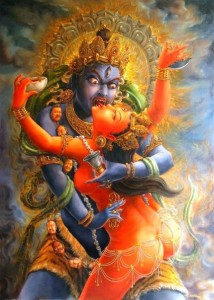
The Horned God and the Goddess, the “Divine Lovers”, represent the ontological polarity between the opposites of male and female common to many mythological traditions: Shiva and Shakti, Pan and Diana, Cernunnos and Brigit, etc. They are metaphorical representations of the Jungian Anima and Animus (the anima, the archetypal feminine symbolism within a man’s unconscious, while the animus is the personification of masculine psychological tendencies within a woman). This symbolism, though, is not found in the Abrahamic traditions. In most cases within this mythological structure the female aspect is vilified while the masculine is exalted. But this is not so in the case of the Goddess and the Horned God. The Goddess has been reinterpreted in a syncretic form into the Virgin, the most revered of all women, while the Horned God has become Satan. And why did they give the Horned God the name of the supreme bad guy in their mythos? Because they hate what He represents. He represents power, lust, carnality, death and knowledge. He is the free-thinking individualist ready to live life on His own terms. As stated before, He is our animal side, that aspect that keeps us tied down to the natural world. He is the antithesis of all that the Christians see as holy. And for their dogma to survive and for there to be calm within the flock, those traits of the human character have to be subdued. But the old time Christians weren’t stupid. They knew that the Horned God was a large part of what a human being is. So by telling the populace that who they are at their core is evil, and you need to kiss the ass of Jesus to be freed of that evil, they created an outstanding system of control. Thus in Christian society came a separation of these long lost lovers (Horned God/Goddess) within the psyche. But no good Christian would ever dream of a union between Satan and the Virgin. This being so, this stark division of archetypes has led to a psychological separation from the anima within the Christian man, and the animus within the Christian women. And by not bringing Satan and the Virgin Mary together, the Christian is an incomplete being.
A symbolic union of Gods and Goddess in the subconscious is important for the health of the psyche. This union of opposites is even evident in the image of that androgynous beast called Baphomet. But don’t worry, connecting with one’s inner male or female element has nothing to do with sexuality. It has everything, though, to do with creating a balance on the scales of passive (female) and aggressive (male) energies within us, which is essential for the development of self-awareness and personal understanding. These are important components of involution (as opposed to evolution) towards reaching the “Higher-Self”.
Abyzou
Abyzou is a female, child-killing demon of Hebrew mythology whose name means “abyss”. In the Testament of Solomon, Abyzou is described as having a “greenish gleaming face with wild, serpent-like hair”and with darkness sometimes hiding her lower body. Claimed to be responsible for miscarriages and infant mortality, Abyzou does not sleep and so wanders the world hunting for women about to give birth. Upon finding them, she then strangles the newly born child. It is told that Azybou is infertile herself, and as such performs these killings out of jealousy and envy of those able to bare offspring.
Abyzou can be controlled via the magic of Solomon, though. Using charms, St. Sisinnious, St. Michael, and the archangel Raphael (her main adversary) are petitioned for protection from the demon. If a pregnant woman were to write the name of Abyzou upon a scrap of papyrus prior to giving birth, Abyzou will flee from their sight, leaving the child unharmed.
Like many demons of her type, Abyzou also likely causes infertility. In the Testament of Solomon, Abyzou takes credit for causing all manners of problematic conditions such as eye, ear and throat problems, as well as causing insanity.
Origin Myths
by The Sect of the Horned God
The Louisiana Science Education Act of 2008 allows educators to teach the ancient Hebrew creation myth in tax-payer funded public schools. The Sect of the Horned God, a left-hand path educational foundation, would like to aid the state of Louisiana in furthering the teaching of mythology. If the Hebrew myth can be taught, then why not some of the many others from around the world?
We have done our research and have found some of these creation myths and present them here, thus aiding in the educational development of the children of Louisiana.
Here are just a few.
AZTEC
In the beginning was the Void. Here the dual god, Ometecuhtli/Omecihuatl, created itself. This god was good and bad, chaos and order, male and female. Being male and female, it was able to have children. It had four, which came to represent the four directions of north, south, east and west. These four gods began to create. They created water, and other gods, and the sea monster Cipactli.
Cipactli was to become the source of the Cosmos.
BABYLONIAN
Apsu was the god of fresh water and thus male fertility. Tiamat, wife of Apsu, was the goddess of the sea and thus chaos and threat. The union of these two entities gave birth to the younger gods.Ea, Enki, and the younger gods, killed Apsu and fought against Tiamat futilely until from among them emerged the champion Marduk, who killed Tiamat.
Marduk consulted with the god Ea (the God of Wisdom) and decided to create human beings from the remains of the gods that instigated the war against Tiamat.
CELTIC
In this myth, in the beginning there was no time, no gods and no people but where the sea met the land a white mare made of sea-foam was born called Eiocha.
Eventually she gave birth to the god Cernunnos, and together they then created more gods.But when the gods and goddesses were grown up, Eiocha left the land to return to her life as a sea-mare and became known as Tethra, Goddess of the Deep.
The gods and goddesses then created a man, a woman and the animals from bark from the oak tree that grew on the land.
CHINESE
Before the world came into being there existed only the Cosmic Egg. From the Egg was born P’an Ku, the primordial man.He then began to fashion the material of Chaos.Each day P’an Ku grew ten feet, using his own body as a pillar to force Heaven and Earth apart.When the separation was complete and they had settled in their places, P’an Ku died.
His breath became the wind and clouds, his eyes became the sun and moon.
GREEK
In the beginning there was only chaos. Then Love was born bringing a start of order. From Love came Light and Day. Once there was Light and Day, Gaea, the earth appeared. Gaea alone gave birth to Uranus, the heavens. Uranus became Gaea’s mate covering her on all sides.
And from their line came the Titans, the Gods and eventually humanity.
HINDU
The Hindu creation myth says that before this time began, there was no heaven, no earth and no space between. But asleep within its endless coils of a giant cobra lay the Lord Vishnu. From Vishnu’s navel grew a magnificent lotus flower.
In the middle of the blossom sat Vishnu’s servant, Brahma. He awaited the Lord’s command.Vishnu spoke to his servant: “It is time to begin.”
Brahma split the lotus flower into three. He stretched one part into the heavens. He made another part into the earth. With the third part of the flower he created the skies.
The earth was bare. Brahma set to work. The world was soon bristling with life and the air was filled with the sound of Brahma’s creation.
NORSE
Odin and his brothers, Vili and Vé, create Middle-Earth (the world of humans) from the body of a giant named Ymir. They create the world from his body, using the different body parts to make different things:From his flesh and some of his bones, they make the land and rocky mountains.They use his blood to make the sea and other bodies of water.From the maggots growing in the dead body of Ymir, Odin and his brothers create the race of the dwarves.
Odin and his brothers create other races: the light-elves, who live far above the earth in Alfheim; sprites and spirits, who populate the forest groves and streams; and the animals of both land and sea.
ZULU
In classical, pre-colonial Zulu myth, Unkulunkulu brought human beings and cattle from an area of reeds. He created everything, from land and water to man and the animals. He is considered the first man as well as the parent of all people.
He taught the Zulu how to hunt, how to make fire, and how to grow food.
And these are only a few.
To Pan by HP Lovecraft
Hoofs it had instead of toes
And a beard adorn’d its throat.
On a set of rustic reeds
Sweetly play’d this hybrid man
Naught car’d I for earthly needs,
For I knew that this was Pan.
Nymphs and Satyrs gather’d round
To enjoy the lively sound.
All to soon I woke in pain
And return’d to haunts of men
But in rural vales I’d fain
Live and hear Pan’s pipes again.
The Charge of the Horned God

“Listen to the words of the Horned God,
Guardian of all things untamed, Lord of Shadows, Master of Darkness,
And keeper of the Gates of Death whose call all must answer:
“I am the fire within your heart, the yearning of your soul.
I am the Hunter of Knowledge,
The Seeker of Truth,
I stand in the darkness of light, who you have named Death,
I throw open wide the Gates of Hell,
And unleash my minions!
But first I beckon ye forth,
To come unto me,
And learn the secrets of Death and Peace,
For I am the Infernal Lord, the Devourer of the Weak!
Scourge and Flame, blade and blood,
These are my gifts unto thee.
I, Keeper of the Black Flame,
Whom you seek in the darkness bright,
I, who has been called Pan, Cernunnos, Dionysus, Shiva and Satan,
For behold!
You are my children and I your father.
For whomever seeks me know I am the master of the Pit,
The fury of the storm in your soul!
On swift night wings go forth,
Seek me with pride and selfishness,
Reason and logic,
But best to seek me with lust and strength,
For this is my path!
Hail the Horned God!
Hail Thyself!
Hail the Sect!”
Lilith: The Symbolic Embodiment of the Left-Hand Path Woman
by Thomas LeRoy, Founder of The Sect of the Horned God
Lilith’s origins, it is said, stem from the Great Mother Goddess of the settled agricultural folk of the Middle East. These were the tribes that resisted the advancement of the nomadic herdsmen invaders, later called the Israelites. As is customary throughout history, the gods and goddesses of many conquered regions are often twisted into devils and demons. Lilith is no exception. Because of their contempt for the Canaanites and those other agricultural tribes of the region, the ancient Hebrews turned this otherwise docile goddess into the mother of demons, one that drank the blood of Abel, the herdsman, after being slain by the elder “god” of agriculture and smithcraft, Cain.
Hebrew myth tells of Lilith being Adam’s first wife, which also has a relation to the Sumero-Babylonian Goddess Belit-ili, or Belili. Yahweh created Adam and Lilith as twins joined together at the back. Strong willed, Lilith demanded equality with Adam. Adam tried to make Lilith lie beneath him during sexual intercourse, but she would not meet his demands of male dominance. Lilith cursed Adam and left Eden to make a home by the Red Sea. While there Lilith became a lover to demons, producing 100 babies a day. It is said by experts in comparative mythology that Lilith’s Red Sea is but another version of Kali Ma’s Ocean of Blood, which gave birth to all things, but needed periodic sacrificial replenishment.
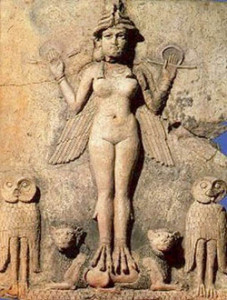
Adam, furious at being abandoned by his wife, complained to Yahweh. In response, Yahweh sent three angels, Sanvi, Sansanvi and Semangelaf, to bring Lilith back to Eden. Lilith rebuffed the angels by cursing them. The angels said to her that Yahweh would take her demon children away unless she returned to Adam. When she did not return, she was punished accordingly. And, to appease Adam’s needs, God sent to him the more complacent Eve.
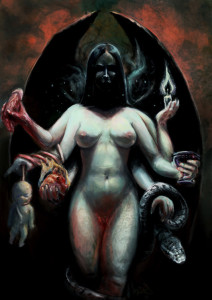
Enraged at Yahweh, Lilith became a female demon of the night who supposedly flew about, searching for newborn children either to kidnap or strangle. While on her night-time ventures she would also seduce men into propagating more demon sons, thus the myth of the succubi was born. From a psychological point of view, this plays into the Jungian idea of the dark anima, or the feminine shadow, represented in the evil seductress. Belief in Lilith’s sinister erotic powers were so great, it led some Jewish communities into adopting the custom of not allowing sons to accompanying their dead father’s body to the cemetery. The reason being was that they could be shamed by the hovering presence of their demon half-siblings, born of their father’s seduction by Lilith.
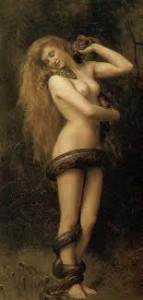
Although Lilith has become a demonized representation of promiscuity and disobedience, she should instead be seen as a positive figure, a symbol of autonomy, sexual equality, and control of a one’s own destiny. Often associated with the Serpent in the Garden of Eden, in this incarnation Lilith symbolically freed humankind from the tyrannical rule of a trickster god. The expulsion from the Garden should not be looked at a curse, but as the beginnings of a destined journey to consciousness. Lilith is the supreme representation of the left-hand path woman, independent, having discarded the patriarchal yoke, and not afraid to use all the tools available to her, including her sexuality, to gain the most out of existence.
“NEVER FORGET THAT YOU ARE A WOMAN, AND THE GREATEST POWERS YOU CAN EMPLOY AS A WITCH ARE TOTALLY DEPENDENT UPON YOUR OWN SELF-REALIZATION THAT IN BEING A WOMAN YOU ARE DIFFERENT FROM A MAN AND THAT VERY DIFFERENCE MUST BE EXPLOITED!”
― Anton Szandor LaVey
